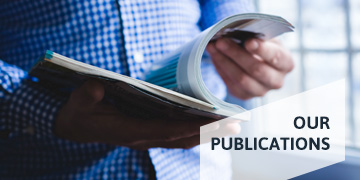Circular economy: "From production and consumption, to waste management and the market for secondary raw materials"
The European Commission continues to implement its Circular Economy Action Plan via different pieces of EU legislation for all stages of a product’s lifecycle. This Action Plan intends to address the whole value chain, from production and consumption, to waste management and the market for secondary raw materials. The objective is to close the loop of the circular economy.
As a reminder, the European Commission adopted an ambitious Circular Economy Package in December 2015. This aims to stimulate Europe's transition towards a new economy model intended to reduce waste and resource consumption and ensure an optimal duration of materials and energy used in products. The European Commission initially addressed the recycling issue and the waste phase through a review the European legislative framework on waste and specific waste streams. It also developed guidance for Member States on converting waste into energy.
At the production phase, additional pieces of legislation are embedded in the circular economy to tackle the resource efficiency issue. For example, the Ecodesign framework is considered as a key instrument to improve resource efficiency. The Ecodesign instrument is now expected to contribute more significantly to "closing the loop" of a product’s lifecycle. Product-specific implementing measures should offer greater incentives for recycling and reuse. Indeed, the long-awaited Working Plan 2016-2019 promotes Ecodesign to systematically tackle material efficiency issues at the design phase. For example, the Commission will propose product-specific and horizontal requirements, such as minimum durability of products, availability of spare parts, design for repair and upgradeability. Marking requirements, (for example, of hazardous substances in plastics) and design requirements will be proposed to facilitate dismantling, reuse and recycling of certain components.
As a next step, the European Commission will focus on the substitution of hazardous substances. The objective is twofold: to promote non-toxic material cycles and to enhance the uptake of secondary raw materials. By the end of the year, the Commission will table a “Plastic Strategy” to improve the economics, quality and uptake of plastic recycling and reuse. It will also table a detailed analysis of the interface of chemical, product and waste legislation that may hinder the transition of recycled materials into the productive economy.


